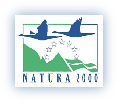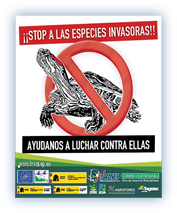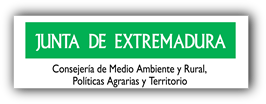









Agrarias y Territorio - DG Medio Ambiente - GPEX
Con la contribución del instrumento financiero LIFE de la Unión Europea


A. Preparatory Actions, Development of Management Plans, and/or Action Plans.
A. 1. Invertory and mapping of the invasive species Acacia dealbata and Ailanthus altíssima in the Tajo basin, and Development of Prevention and Eradication Measures.
A. 2. Inventory and mapping of alien invasive bank plants in the Guadiana basin, and its effect on biodiversity.
A. 3. Establishment of risk areas for the Zebra mussel (Dreissena plymorpha) in the Guadiana and Tajo basins, as well as prevention measures.
A. 4. Identification of exotic species invading Chamaerops humilis L. and Sagitaria sagittifolia L. habitats, and the causes for their extinction.
A. 5. Assessment on the thread invasive species Azolla foliculoides means to the Tajo basin, and control measures taken on it.
A. 6. Monitoring and evaluation actions on invasive species in the Alqueva area (Alentejo, Portugal).
A. 7. Management protocol to avoid pet-keeping and trade in invasive species.
C. Concrete conservation actions.
C. 1. Control over the risk of the Neovison vison transmitting diseases to native mustelids, and their effect on small protected mammals.
C. 2. Tests to control and eradicate the Slider Turtle (Trachemys scripta elegans).
C. 3. Eradication of Asian clam populations from the Guadiana basin.
C. 4. Prevention of the introduction of the Zebra mussel (Dreissena polymorpha) in the Tajo and Guadiana basins (Spain-Portugal).
C. 5. Restoration of the natural habitat of the Chamaerops humilis L., and eradication of the invasive species putting its continuation at risk.
C. 6. Reintroduction of the extinct species Sagitaria sagittifolia L. after the eradication of the invasive species that caused its extinction.
C. 7. Methods of prevention, control, and eradication of Azolla filiculoides populations in the Tajo basin.
D. Awareness-raising actions and Dissemination of results.
D. 1. Creation and installation of informative panels on the project.
D. 2. Design of a website.
D. 3. Strategic media outreach activities (press, radio, and television) in order to avoid the introduction of invasive species.
D. 4. Public awareness and promotional material.
D. 5. Educational workshops for schools.
D. 6. Technical diffusion, and attendance to seminars and conferences for the proyect dissemination.
D. 7. International conferences on biodiversity loss caused by invasive species.
D. 8. Layman's report.
D. 9. Changes in the behaviour of sectors related to the pathways of introduction of invasive species.
E. Project management and monitoring actions.
E. 1. Project management by the Directorate General for Environment (Government of Extremadura).
E. 2. Monitoring and evaluation of the importance of any action taken in the project.
E. 3. External audit of the project.
E. 4. “Iberian work group” creation and coordination.
E. 5. Development of a Communication Plan after LIFE Project.
E. 6. Interaction with other LIFE Projects, or similar.
E. 7. Staff training related to the INVASEP Project.
























